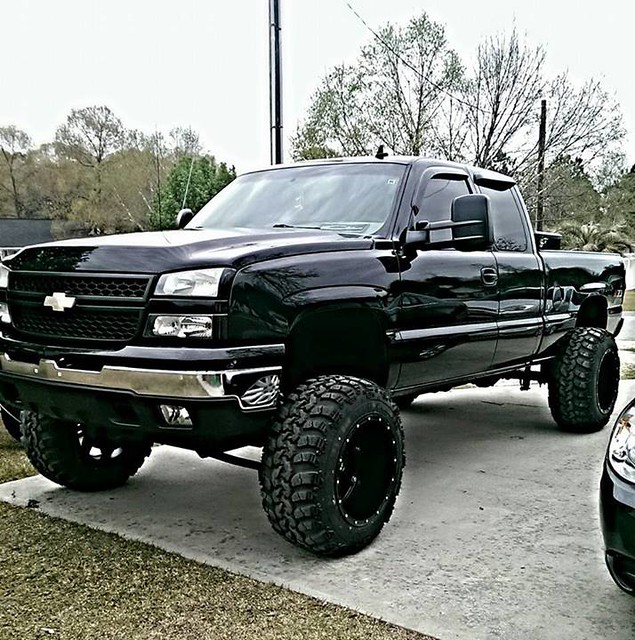


Adjusting the pressure can also "tune" the suspension to some degree by making the springs softer or stiffer.

They allow you to easily lower or raise your car by adjusting the pressure in the springs (an on board compressor and air storage tank facilitate this). Adapted from the trucking industry (you've probably seen some under the rear of a big rig trailer), air springs can be used in place of coil springs or in conjunction with leaf springs. Air springs (or air bags as they are commonly called) are bladder-like components made of heavy-duty, fabric-impregnated rubber similar to that found in tires. And finally, realize that when you're replacing sagging 30-year-old stock springs, some sport springs won't alter your car's ride height much.Īdjustable air spring suspensions have become popular by offering the promise of "having your cake and eating it too" (or slamming your ride and driving it too).
BAGGED CATEYE SILVERADO UPGRADE
If you're installing a stiffer sport spring, it's also smart to upgrade to a performance shock designed to work with a higher spring rate. When choosing sport springs, keep in mind that some are tailored more for performance handling, while others are designed simply for lowering, so you need to consider what type of driving you want to do. This provides a relatively normal ride during regular driving, with an increasing spring rate as the coils are compressed during aggressive driving. Some sport springs have a variable spring rate, meaning the coils are more tightly wound at one end. By using a thicker wire or winding the coils at a different pitch, short springs can be given a higher spring rate that will prevent lowered suspensions from bottoming out so easily. These lowering springs-or sport springs-work on the same principle as cut coils, but they overcome some of the drawbacks by employing a different design from the start. Several companies offer replacement coil springs specifically designed for lowering cars. An air-powered cutoff wheel, hacksaw, or chop saw are the best tools for cutting springs.
BAGGED CATEYE SILVERADO FULL
In addition, front springs should be left long enough so they won't shift or slip out of the spring pockets when the suspension is at full droop (completely unloaded). If you're going to cut coils, we suggest using new (or relatively new) springs and cutting them in small increments (1/4-coil at a time) on the open, or "wild," end. We should also note that you can't cut coils that are tapered on both ends (like the rear springs on '67-and-later A-bodies, as well as some other Chevys). Instead, we recommend it for making minor ride height adjustments (an inch or less). In general, we aren't big proponents of coil cutting as a primary means of significantly altering a car's height. Cutting coils typically increases the likelihood of bottoming out either the suspension or the chassis (like when your crossmember hits the pavement), and that potential is exaggerated with older coils that are already suffering from fatigue. This not only lowers the car, it also alters the spring rate (the amount of force required to deflect the spring) slightly. It basically entails removing the coil springs and cutting off a coil or so, making the springs shorter. This is probably the most time-honored method for lowering the front (and sometimes rear) of a Chevy, but that doesn't automatically make it the best.


 0 kommentar(er)
0 kommentar(er)
